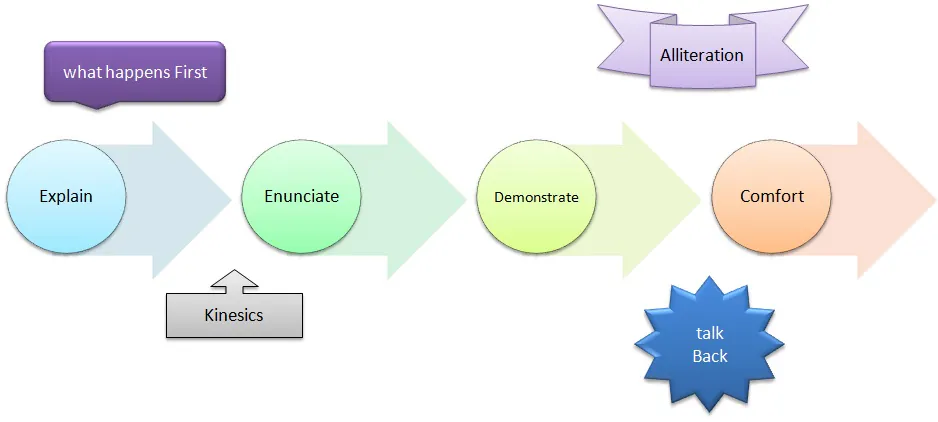
A Feedback Conversation Unpacked
(click below to view the video or read on if you’d prefer!)
 left to Christmas. At the firms I worked at, by now, the annual performance appraisal process was in full gear so in my last three articles for 2011, I will focus on giving and receiving feedback.
left to Christmas. At the firms I worked at, by now, the annual performance appraisal process was in full gear so in my last three articles for 2011, I will focus on giving and receiving feedback.
In this first article, I will run through 8 key components of a successful feedback discussion. It isn’t just for managers. It’s for anyone for who find themselves on the receiving end of a feedback talk: if it’s not going well, these 8 steps will allow you to steer the conversation into a more constructive direction. And if you find you can’t steer, at least you will have the insight to understand what’s going on and react constructively.
In the second article on feedback, I will cover the top three mistakes managers make when giving feedback. Again, while this will benefit managers, it will also be useful for the recipients of feedback to both cope with and address poorly-given feedback and yet preserve their relationship with their line manager.
Finally, in the third last article on feedback, I will share with you my concept of “ethical bragging”. That’s how you make sure that you communicate about your achievements. I have observed that too many people find it uncomfortable to talk about their contribution: they don’t want to come across as arrogant and so they don’t do their accomplishments enough justice.
So let’s kick off our tour of 8 fundamental components of a feedback discussion. Together the 8 steps form the acronym ‘Feedback’ to suggest a mnemonic for the process.

 Interestingly, whenever I discuss feedback with people, everyone knows that it’s supposed to be specific and yet… people don’t do it! I’ll explore why in the next article.
Interestingly, whenever I discuss feedback with people, everyone knows that it’s supposed to be specific and yet… people don’t do it! I’ll explore why in the next article. preceding stages, it is a common problem to miss out on this stage – whereby the feedback provider makes clear to the feedback recipient the consequences of what was covered in the previous steps. If the feedback is good, this is about showing that the manager recognises the positive impact from the accomplishment: it nicely paves the way for saying ‘Thank You’. When the feedback is negative, this links the poor performance of the individual to the consequences for the company but also for the individual’s career aspirations. By discussing the under-performance from a broader perspective, the feedback provider demonstrates that this is not a personal matter though they have the other person’s best interests at heart.
preceding stages, it is a common problem to miss out on this stage – whereby the feedback provider makes clear to the feedback recipient the consequences of what was covered in the previous steps. If the feedback is good, this is about showing that the manager recognises the positive impact from the accomplishment: it nicely paves the way for saying ‘Thank You’. When the feedback is negative, this links the poor performance of the individual to the consequences for the company but also for the individual’s career aspirations. By discussing the under-performance from a broader perspective, the feedback provider demonstrates that this is not a personal matter though they have the other person’s best interests at heart. negative feedback may be to clam up. It will be the feedback provider’s job to try and elicit the other person’s views, even to disagree provided they have a rationale. This is a crucial stage which requires delicate handling but it is also fundamental to turning around under-performance. It is the difference between mismanaging talent which will walk out and the first step to a happy ending.
negative feedback may be to clam up. It will be the feedback provider’s job to try and elicit the other person’s views, even to disagree provided they have a rationale. This is a crucial stage which requires delicate handling but it is also fundamental to turning around under-performance. It is the difference between mismanaging talent which will walk out and the first step to a happy ending. pathways are discussed. It is the part where the feedback provider offers help. I’ll come back to this in the next article because it needs to be done well if it is to actually bear fruit.
pathways are discussed. It is the part where the feedback provider offers help. I’ll come back to this in the next article because it needs to be done well if it is to actually bear fruit.
There you have it: a rapid tour of a successful feedback conversation. I know this was quick but I’ll be elaborating on some of these elements in my next article where I will cover the top three mistakes managers make when giving feedback.
If this article resonated with you, don’t hesitate to contact me for a chat where we would explore what is going on for you and what you would like to have happen. To contact me, click here.
If you don’t have it already, get your copy of “5 Gear Shifts to Accelerate your Career!” and learn about the five building blocks of any successful career! Get it here now!